Fast DC charge test of new KIA Niro EV 2022
by Vincent Recipon · Published · Updated
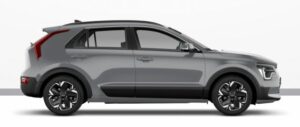 (copy of the excel file with all date presented)
(copy of the excel file with all date presented)- understand how they improved the 10%-80% charging time on the new model as advertised
- make a quick comparison with old e-Niro and Megane e-tech.
Time results
- Charging 20%-80% = 38 mn
- Charging10%-80% = 44 mn
- Charging 10%-90% = 65 mn
- Charging 10%-100% = too much !
Charging curve
- Maximum charging power is 84kW between 7% SOC and 28%
This maximum charging power is greater than the value announced by the manufacturer - 1st step at ~78 kW between 29% and 44%
- 2nd step at ~65 kW between 44% and 58%
- 3rd step at ~59kW between 58% and 69%
- 4th step at ~44kW between 69% and 81%
- Charge stops at 81% during 3 minutes (186s) probably to cool down the battery and optimize the charging time up to 80%
- 5th step at ~26kW between 81% and 91%
- Last step at ~17kW between 91% and 99%
Comparison Niro EV 2022 with old e-Niro
I’ve not tested old kia e-Niro, charging curve of this model is taken from internet (data provided by fastned)
The blue curve to the right is the difference of charging power between both vehicles : if it ramps-up then the new Niro EV is charging quicker, if it ramps down then the old Kia e-Niro is charging quicker.
We observ :
- Charging power are roughly identical for both models between 27% SOC and 75%.
- Niro EV 2022 have a higher charging power below 27% SOC.
First explanation for reduced charging time of new Niro EV 2022 between 10%-80%. - Niro EV 2022 have a maintained charging power of 44kW between 75% and 81% compared to old Niro with a charging power reducing to 26kW above 76% SOC.
Second explanation for reduced charging time of new Niro EV 2022 between 10%-80%. - However charging is stopping on new Niro EV at 81% SOC during 3 minutes, to cool down the battery and compensating probably the maintained 44kW up to 81%
We then really gain charging time on this new Niro EV if charging is beginning with battery well below 27%, and charging is stopped at 80%
Comparison Niro EV 2022 and Megane e-tech
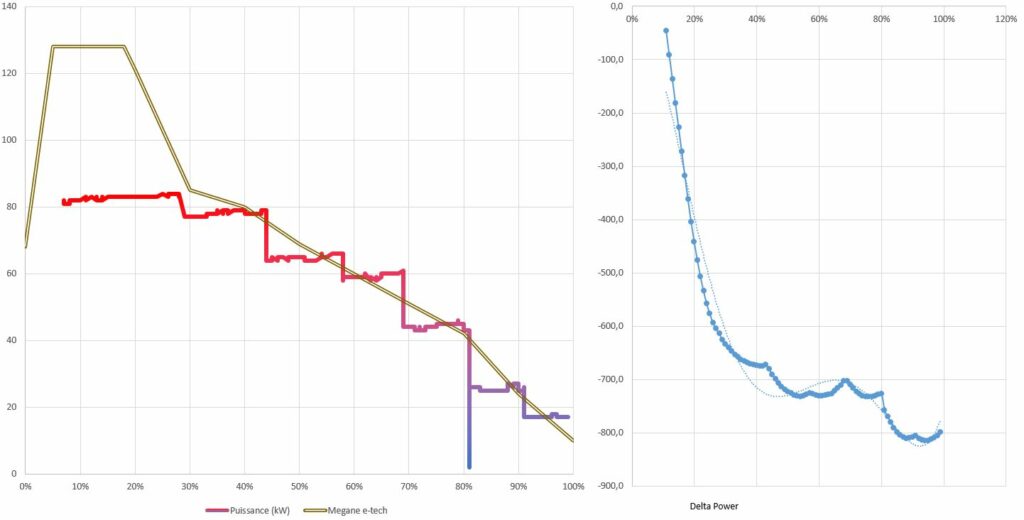
Comparison of charging power between Niro EV 2022 and Megane e-tech
I’ve not tested the Megane e-tech, charging curve of this model is taken from internet.
The blue curve to the right is the difference of charging power between both vehicles : if it ramps-up then the new Niro EV is charging quicker, if it ramps down then the megane e-tech is charging quicker.
We observe :
- Charging power are similar between both models between 35% SOC and 80%
- Megane e-tech have a much higher peak charging power (130kW) than Niro EV (84kW)
This charging peak is maintained on Megane e-tech between ~5% and ~18%
We then gain a lot of charging time with Megane e-tech if we start charging with SOC much below18%. There is still charging speed gain when battery SOC is below 35%. For 35% SOC up to 80% charging power are roughly similar.
Comment on Battery SOC when starting the charge
It’s rare to be able to start a load at 10% or less :
- from 15% SOC the Niro EV (and probably other models) begin to alert about low level of battery.
If we compare to fuelled car, at 10% we have been in the reserve from 15km, at 5% there are only 15km left before breaking down. You have to bear it. - Little math …
- 1% battery SOC for a Niro / e-Niro / Megane e-tech on motorway means around 3km of travel
- there are still few fast chargers, the distance between each terminal is around 100km, or about 30% battery.
The battery charge on arrival at the charging station will oscillate within a range of 30%
- in real life we rather start a fast charge with a battery that oscillates between 5% and 35%, with an average of 20%
- the famous power peak announced by manufacturers between vehicles is therefore not as impactful as that on the real charging time
- this doesn’t imply when comparing a 400V vehicle (Niro EV) to an 800V vehicle (EV6). Roughly the charging power (theoretically) doubles on an 800V vehicle regardless of the battery level.

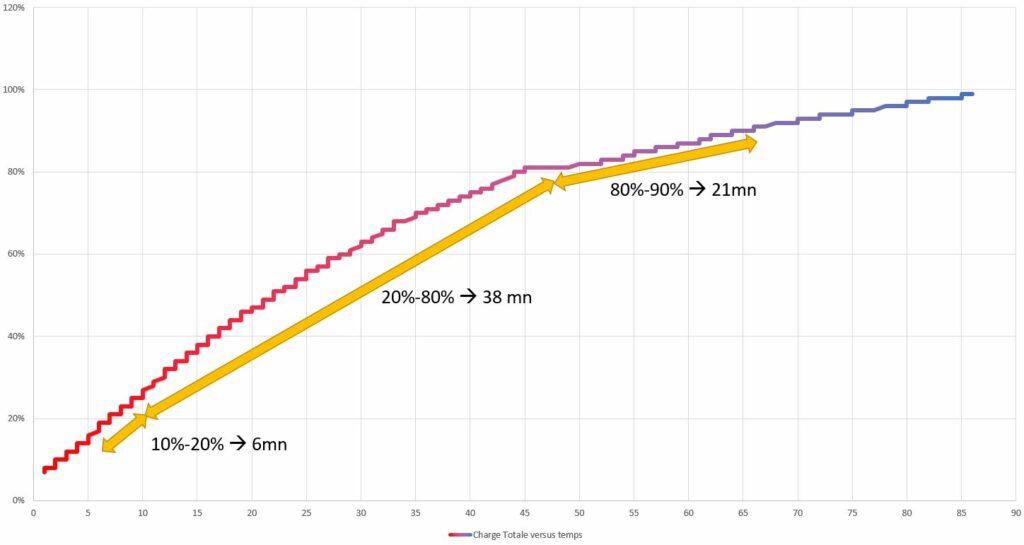
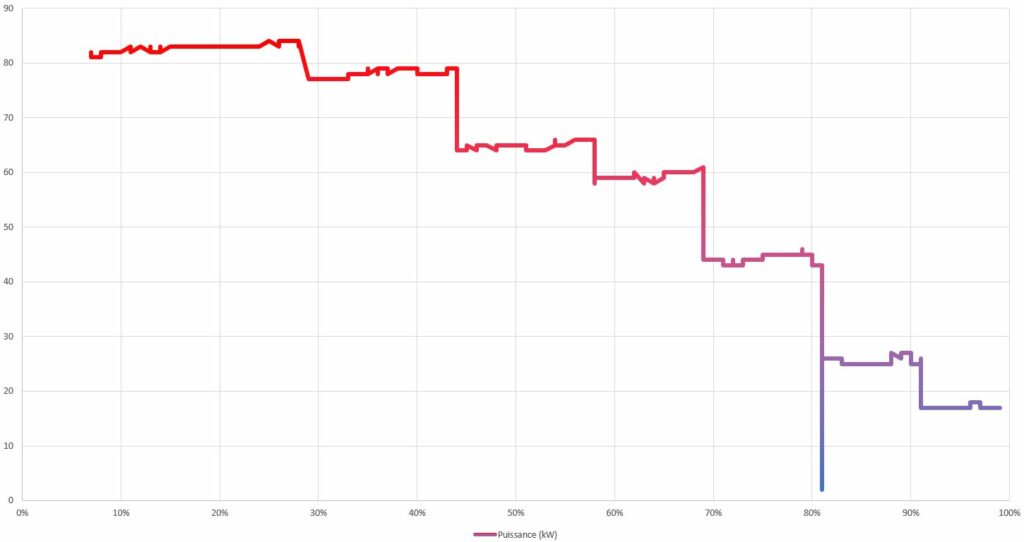
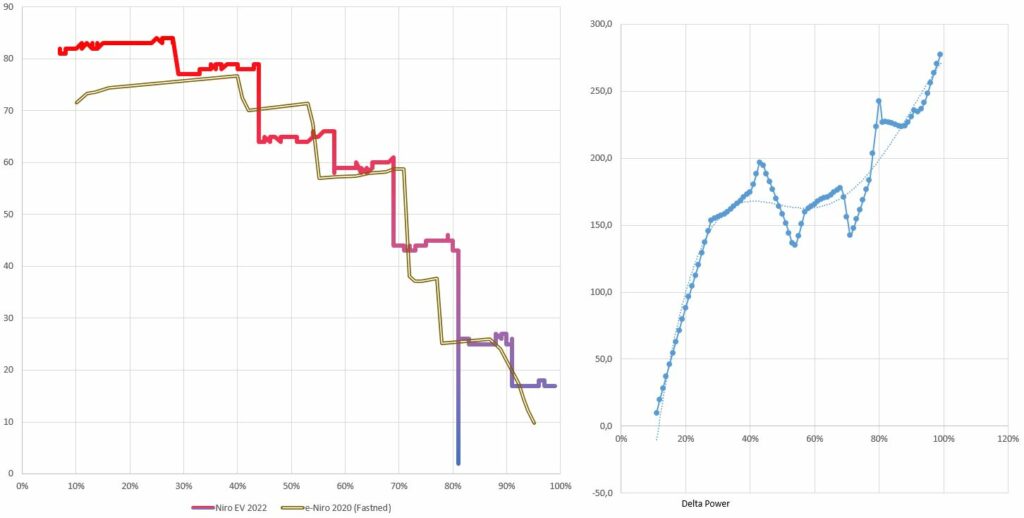
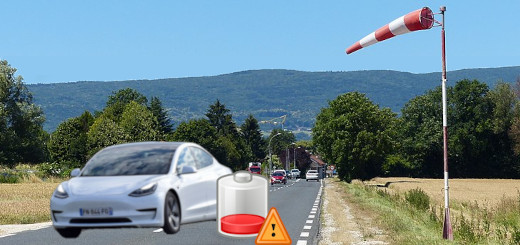
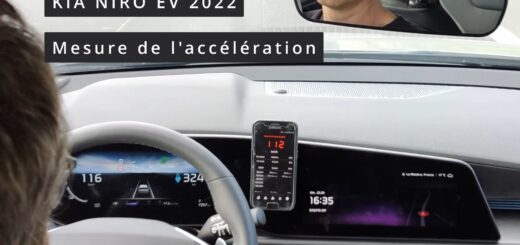
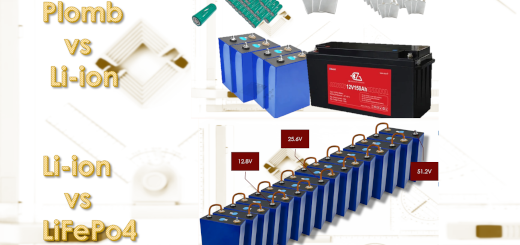
Dans votre article vous ne tenez pas compte de la température de la batterie ce qui a un effet très important sur la courbe de charge sachant qu’il n’y a pas de preconditionnement sur les e-niro
Bonjour,
Effectivement le froid peut avoir un effet important sur la vitesse de charge.
Attention cependant, la Kia Niro EV nouvelle génération (2022 et ultérieure) est bien équipée d’un système de pré-conditionnement de la batterie.
J’ai d’ailleurs mis en ligne un article à ce sujet que vous pourrez trouver ici : https://www.vrdigitalworld.com/voitureelec/le-pre-conditionnement-des-batteries-cest-quoi-exemple-sur-la-kia-niro-ev
Je trouve dommage de comparer une courbe très précise pour le Niro avec une courbe très aléatoire pour la Mégane, et qui semble plutôt défavorable. En cherchant un peu dans les vidéos d’internet, on se rend compte que la puissance habituelle est :
– à 30% => 105kW vs 85 sur le graphique affiché ici
– à 40% => 89kW vs 80
– à 60% => 65kW vs 60
– à 80% => 51kW vs 42
– à 90% => 36kW vs 25
Ça n’est pas le jour et la nuit, mais suffisamment différent pour arriver à la conclusion souhaitée : Mégane/Niro, c’est kif-kif
Bonjour. Vous pourriez donner le lien sur cette vidéo ? Je peux mettre a jour la courbe si il y a effectivement des données plus fiables.